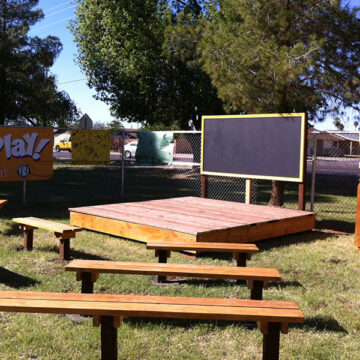A stage enhances the play area by giving children a place to put on skits and plays, and serves as a space to hold other community events as well.
How to build a 10′ x 10′ stage Link copied!


A stage enhances the play area by giving children a place to put on skits and plays, and serves as a space to hold other community events as well.